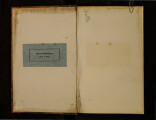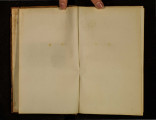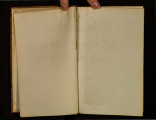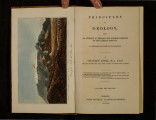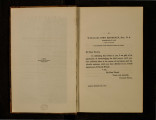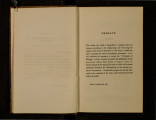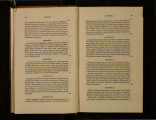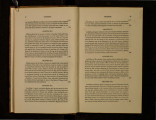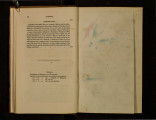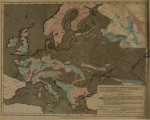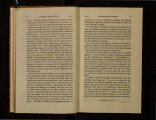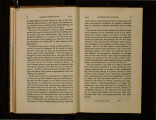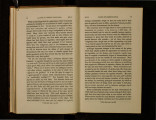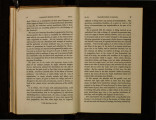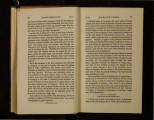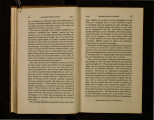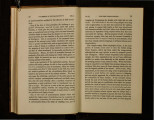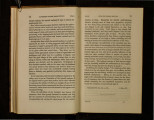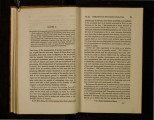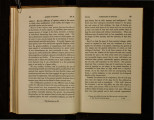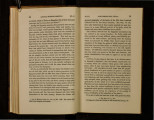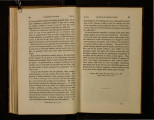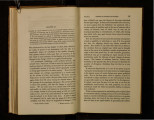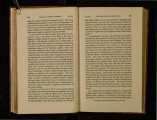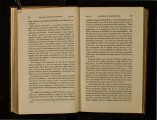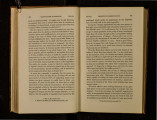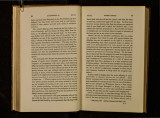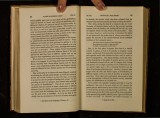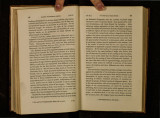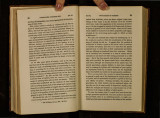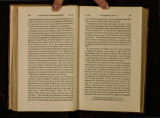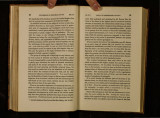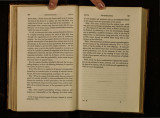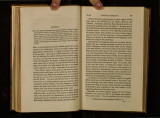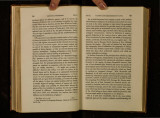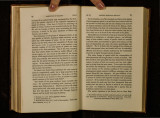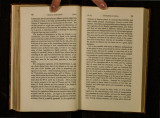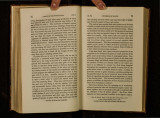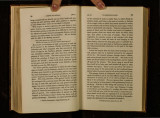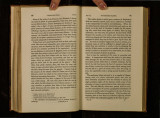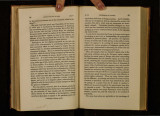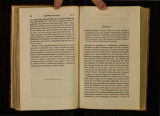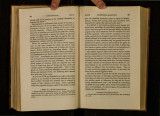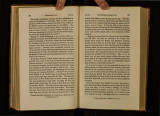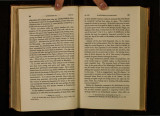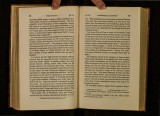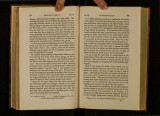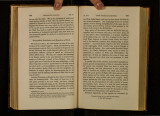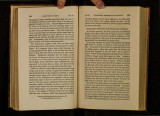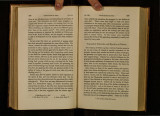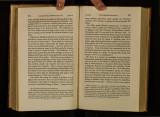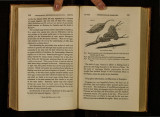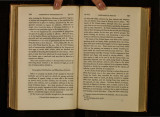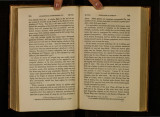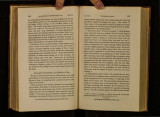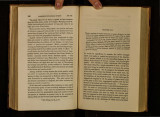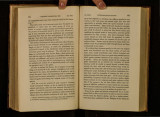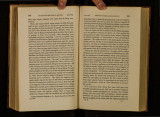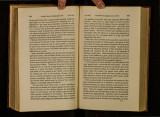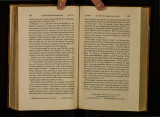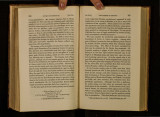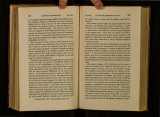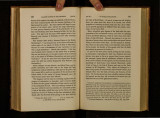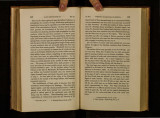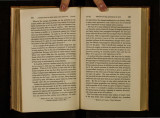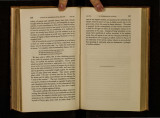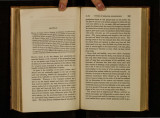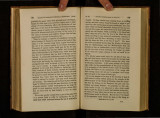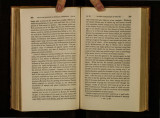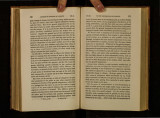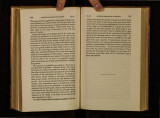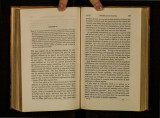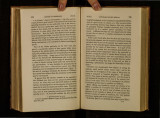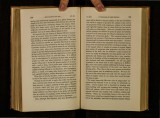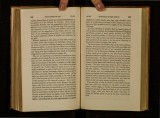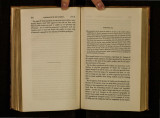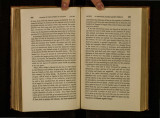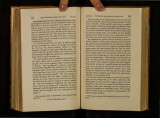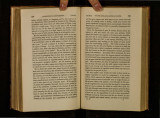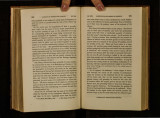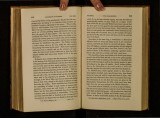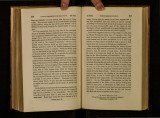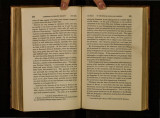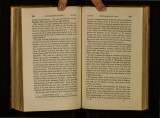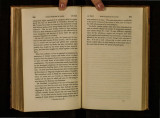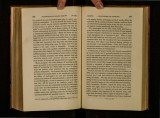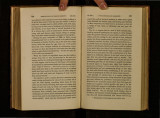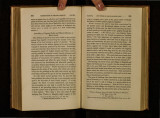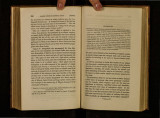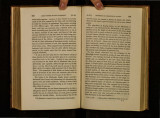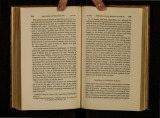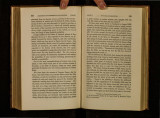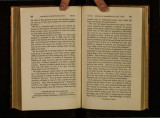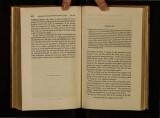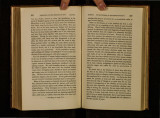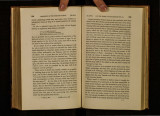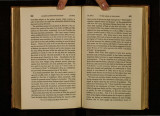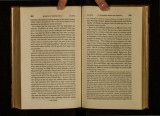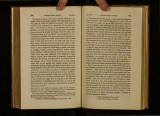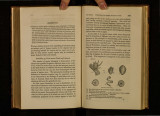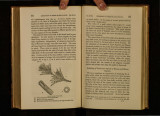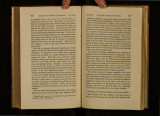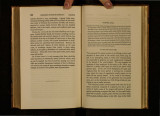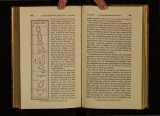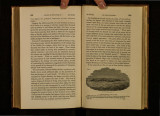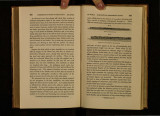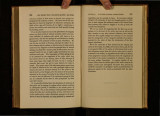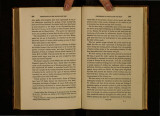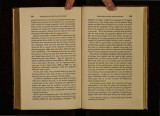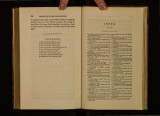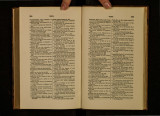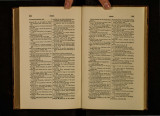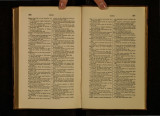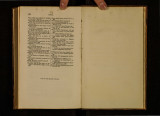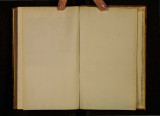| OCR Text |
Show INFLUENCE OF MAN IN MODIFYING [Ch.XII, cipitated in part upon the mountains of Brazil,. whi~h are but 1o w an d so d1. s t n" b u t ed as to extend far into the mt. er10r. . The portion which remains is borne westward, and, losmg a l~ttle as I· t procee d s, 1"t I·S a t length ar1·ested. by the Andes, where 1t falls r •• • • d · h tbe1 · own m s owers on 1• summits · f·h e aerial cmrent, now deprived of all the humidity with which it can part, arrives in a state of complete exsiccation at Peru, where, consequently, no rai• n ..J1.' a1 1 s. In the same manner the Ghauts in India, a chain only three or four thousand feet high, intercept the whole moisture of the atmosphere, having copious rains on their wind ward side, while on the other the weather remains clear and dry. The rains in this case change regularly from the west side to the east, and vice versa, with the monsoons. But in the region of America, beyond the thirtieth parallel, the Andes serve as a screen to intercept the moisture brought by the prevailing winds from the Pacific Ocean ; rains are copious on their summits, and in Chili on their western declivities; but none falls on the plains to the eastward, except occasionally when the wind blows from the Atlantic*." We have been more particular in explaining these views, because they appear to us to place in a true light the depend~ nce of vegetation on climate, notwithstanding t~e reciprocal action which each exerts on the other, the humidity being increased, and m~n1~ uniformly diffused throughout the year, l?Y the gradual spr;e~ding of. wood. Before conclu<ling this chapter, we must offer a few obser· vations on the influence of :man ·in modifying the physical geogr~phy of th!=l globe, for we must class his agency among the powers of organic nature. The modifications of the surface, resulting from human ~gency, are only on a considerable SGale when we have obtained so much ~now ledge of the working of the laws of nature as to be able to use them as instruments to effect our purposes. We * :~ia~laren, ibid., where the position of the American forests, in accordance with this _theory, is laid down in a map. Ch. XII.) THE PHYSICAL GEOGRAPIIY OF THE GLOBE. mu~t command nature by obeying her laws, according to the saymg of the philosopher, and for this reason we can never materially inter~et·e with any of the great changes which either the a~ueous or Igneous causes are bringing about on the earth. I~ vam .would the inhabitants of Italy strive to prevent the tnb.u tanes of the Po and Adige from bearing down , annua1 1 y, a~ 1mm~nse ;olume of sand and mud from the Alps and Apen-nmes; m vam would they toil to re-convey to the mountains the mass torn from them year by year, and deposited in the form of sediment in the Adriatic. But they have, nevertheless, been able to vary the distribution of this sediment over a considerable area, by embanking the rivers, and preventing the sand and mud from being spread, by annual inundations over the plains. ' We have explained how the form of the delta of the Po has been altered by this system of embankment, and how much more rapid, in consequence of these banks, have been the accessions of land at the mouths of the Po and Adige within the last twenty centuries. There is a limit, however, to these modifications, since the danger of floods augments with the increasing height of the river-beds, while the expense of maintaining the barrier is continually enhanced, as well as the difficulty of draining the low surrounding country. In the Ganges, says Major R. H. Colebrooke, no sooner is a slight covering of soil observed on a new sand-bank, than the island is cultivated ; water-melons, cucumbers, and mustard, become the produce of the first year, and rice is often seen growing near the water's edge, where the mud is in large quan~ity. Such. islands may be swept away before they have acqmred a sufficient degree of stability to resist permanently the force of the stream ; but if, by repeated additions of soil they acquire height and firmness, the natives take possession: and b~ing over their families, cattle and effects. They choose the. h1ghes.t spots for the sites of villages, where they erect the1r d~ellings with as much confidence as they would do on the mam land; for although the foundation is sandy, the |



